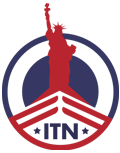You're always on the lookout for new and efficient ways to transform your business. You're open to cloud computing and its potential to reduce costs and time to market. But, working it out effectively is a challenge. We, being the channel partner of Microsoft offer free consultation on hand, in mapping your cloud needs and services.Cloud Computing provides us a means by which we can access the applications as utilities, over the internet. It allows us to create, configure, and customize the business applications online.
THERE ARE CERTAIN TECHNOLOGIES THAT ARE WORKING BEHIND THE CLOUD COMPUTING PLATFORMS MAKING CLOUD COMPUTING FLEXIBLE, RELIABLE, USABLE. THESE TECHNOLOGIES ARE LISTED BELOW:
- Virtualization
- Service-Oriented Architecture (SOA)
- Grid Computing
- Utility Computing
Virtualization is a technique, which allows to share single physical instance of an application or resource among multiple organizations or tenants (customers). It does so by assigning a logical name to a physical resource and providing a pointer to that physical resource when demanded.
Service-Oriented Architecture helps to use applications as a service for other applications regardless type of vendor, product or technology. Therefore, it is possible to exchange the data between applications of different vendors without additional programming or making changes to services.
Grid Computing refers to distributed computing in which a group of computers from multiple locations are connected with each other to achieve common objective. These computer resources are heterogeneous and geographically dispersed.
Utility computing is based on Pay per Use model. It offers computational resources on demand as a metered service. Cloud computing, grid computing, and managed IT services are based on the concept of Utility computing.
CHARACTERISTICS
Here are the characteristics of SaaS service model:
- SaaS makes the software available over the Internet.
- The softwares are maintained by the vendor rather than where they are running.
- The license to the software may be subscription based or usage based. And it is billed on recurring basis.
- SaaS applications are cost effective since they do not require any maintenance at end user side.
- They are available on demand.
- They can be scaled up or down on demand.
- They are automatically upgraded and updated.
- SaaS offers share data model.
BENEFITS
Using SaaS has proved to be beneficial in term of scalability, efficiency, performance and much more. Some of the benefits are listed below:
- Modest Software Tools
- Efficient use of Software Licenses
- Centralized Management & Data
- Platform responsibilities managed by provider
- Multitenant solutions

